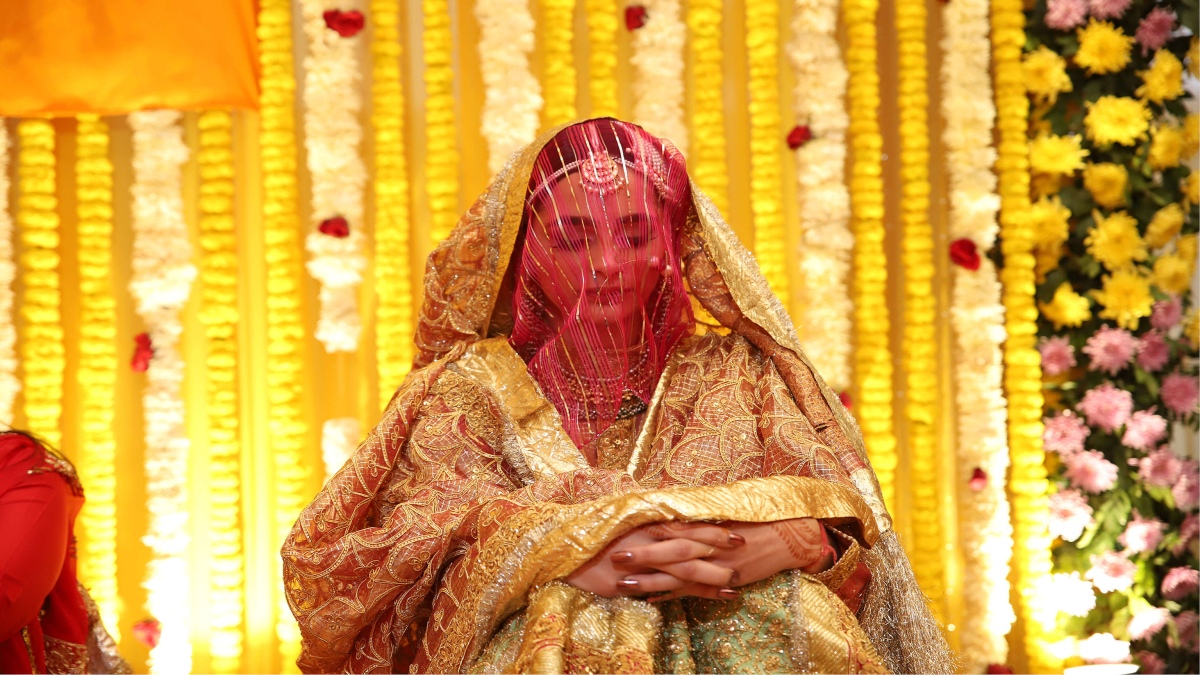
Rampur, today a sleepy little town tucked away in the Terai region of Uttar Pradesh, was once the seat of the richest principality of India, the Rampur State, affluent not just in its worldly possessions but also in its abundant patronage to cuisine, culture, craft and religion.
The Nawabs enjoyed much reverence and adulation, that has permeated through the centuries till date. Such love and adulation brimmed at the recent nikaah of Nawabzada Haider Ali Khan with Ananya Dagar alias Shaukat Zamani Begum at the residence of the family, Noor Mahal. A small, intimate affair attended by the inner circle of the family, it turned into a moment of revelry for the entire city, with the father of the groom, Nawab Syed Kazim Ali Khan, the mother, Firdaus Zamani Begum, and the grand matriarch, Rajmata Mehtaab Zamani Begum of Rampur enjoying a deep, and reciprocated relationship with the people of Rampur. At the helm of the city’s cultural, political and social fabric, they rallied around them the finest threads of regal culture that still remains in the city.
As Princess Chandni Kumari, a close friend of the family hailing from the neighboring Seohara, recounts, “Noor Mahal was a vision dressed up in all colours of festive yellow going into ochre. The Nawabs, known for their culinary prowess, had their royal kitchens and trusted khansamas rustle up quite a mouthwatering spread of niharis, the famed Moradabadi daal, the galawat ke kabobs, the sheer mal and the biryani.” Firdaus Zamani Begum of Rampur.
Firdaus Zamani Begum of Rampur. Aayat Zamani Begum of Rampur.
Aayat Zamani Begum of Rampur. Nawabzadi Fareha Ahmed Khan of Loharu, Tikarani Shailja Kumari Katoch of Lambagraon and Nawabzadi Farheen Ahmed Khan of Loharu
Nawabzadi Fareha Ahmed Khan of Loharu, Tikarani Shailja Kumari Katoch of Lambagraon and Nawabzadi Farheen Ahmed Khan of Loharu Nawab Syed Kazim Ali Khan of Rampur with Aayat Zamani Begum of Rampur.
Nawab Syed Kazim Ali Khan of Rampur with Aayat Zamani Begum of Rampur.
 Nawad Syed Kazim Ali Khan of Rampur with Nawabzadas Haider Ali Khan and Ali Mohammad Khan of Rampur.
Nawad Syed Kazim Ali Khan of Rampur with Nawabzadas Haider Ali Khan and Ali Mohammad Khan of Rampur. Shaukat Zamani Begum of Rampur.
Shaukat Zamani Begum of Rampur.
A two-day affair, it began with the welcome evening, where the Nawab invited swirling dervishes to lend a Sufiana air to the ceremony. As a few guests from all across the country had gathered to be part of the functions, there was a formal welcome to the stunningly beautiful bride, dressed in a traditional farshi by the women of the family. The mother looked a vision in white pearls and the grandmother looked her divine and beautiful self, as the statuesque Nawab saab Kazim Ali, a design aficionado and cuisine expert, ensured every moment was pristinely perfect. Joining him in making every guest comfortable was the slender and beautiful elder bahu, Begum Shazli Ali Khan alias Aayat Zamani Begum, who had flown in with her husband, Nawabzada Ali Mohammad Khan, an investment banker from New York.
The nikaah next day saw the family air their heirlooms. Both the bahus wore historic costumes that belonged to the erstwhile begums of Rampur. Shazli sparkled through in the green karchob gharara worn by her grandmother-in-law, the Begum Saab Mahtaab Zamani Begum, who had married into Rampur from the state of Loharu in Rajasthan. The bride herself looked divine in a karchob farshi worn by her great grandmother-in-law, the famed HH Rafat Zamani Begum, whose beauty is fabled even today.
The nikaah, rendered in both the Shia and Sunni style, had a 104-year-old Mirasin sing blessings to the bride and groom. “Just like she had sung at my grandmother’s wedding, many moons ago. She was then a little girl,” shared Kazim Ali. The bride was a vision, her face covered in a ceremonial dupatta as she sat behind a phoolon ki chadar, whispering a shy “qabool” to her husband, Haider Ali. An aspiring politician, and a dynamic one at that, Haidar is already making deep inroads into the heart of the city and its folks.
The state of Rampur was founded by Nawab Ali Muhammad Khan, the adopted son of Sardar Daud Khan, the chief of the Rohillas in Northern India. The Rohillas were Afghans who had entered India in the 18th century as the Mughal Empire was in decline and taken control of Rohilkhand, at the time known as Katehr. In 1737, Nawab Muhammad Khan received the territory of Katehr from Emperor Muhammad Shah, only to lose everything to Nawab Wazir of Oudh in 1746. Two years later, he assisted Ahmad Shah Durrani in his conquest of India, recovering all his former possessions.
Over the next two centuries, the Rampur royals, earlier a warring clan, struck deep roots, and with the blessings of the British, began to build one of the richest principalities in the country.
This forms the legacy inherited by and kept alive by the current family, which is all set to restore and revive the many monuments that they are patrons of. They have attracted the world’s attention towards the Raza library, where some of the oldest Mughal manuscripts reside. As the Nawab himself puts it, “For my ancestors, progress was about walking hand in hand with the people and infusing in every corner of Rampur a sense of cultural affluence that set the state apart. This is the legacy that I am now striving to keep alive.”















